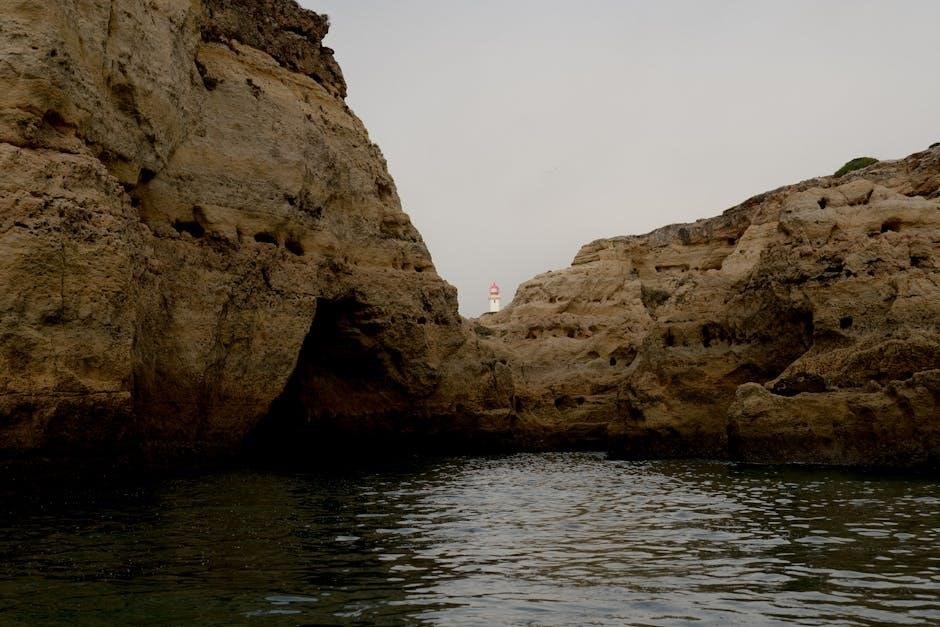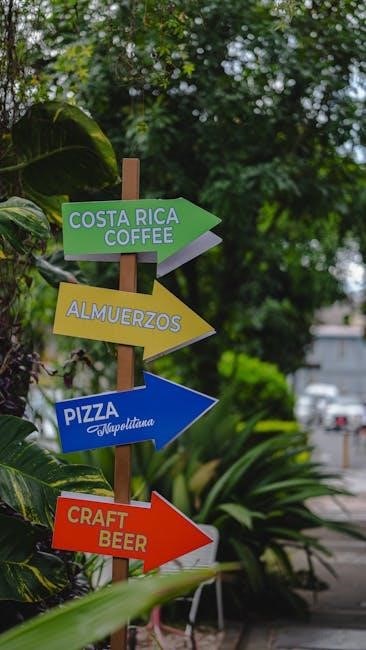TV Guide Council Bluffs Iowa: A Comprehensive Plan (as of 12/22/2025)
As of today, December 22, 2025, Council Bluffs residents have evolving options for accessing TV schedules, including apps, websites, and traditional guides.
Navigating television programming in Council Bluffs, Iowa, requires understanding the diverse landscape of available TV listings. Residents rely on various methods to stay informed about their favorite shows and local broadcasts. The proliferation of streaming services, alongside traditional cable and satellite options, adds complexity.
This comprehensive plan, current as of December 22, 2025, explores these options, from printed guides to cutting-edge integrations with AI like ChatGPT. We’ll detail how to access schedules effectively, considering the strong Omaha market influence on local channels.
Current TV Guide Options for Council Bluffs Residents
Council Bluffs viewers currently access TV listings through several avenues. Traditional printed guides, though declining, remain available at some retailers. Numerous online TV guide websites offer searchable schedules, and dedicated TV guide apps for mobile devices provide on-the-go access.
Furthermore, emerging technologies like ChatGPT integration (experimental) present novel ways to query schedules. These options cater to diverse preferences, from those favoring physical copies to tech-savvy individuals seeking AI-powered assistance.
Traditional Printed TV Guides
While diminishing in popularity, traditional printed TV guides are still accessible to some Council Bluffs residents. These guides, typically available at grocery stores and pharmacies, offer a week-long overview of programming. However, they often lack the immediacy and detailed information found in digital formats.
Updates are infrequent, and listings may not always reflect last-minute schedule changes. Despite these limitations, some viewers prefer the tactile experience and simplicity of a printed guide.
Online TV Guide Websites
Numerous websites provide comprehensive TV listings for Council Bluffs, Iowa, leveraging the Omaha/Council Bluffs DMA. These platforms, like TVGuide.com and Zap2it, offer up-to-date schedules, program descriptions, and often, streaming options. Users can typically search by channel, time, or program title.
Many sites also feature user reviews and ratings, enhancing the viewing experience. Accessibility via desktop and mobile browsers makes them a convenient choice.
TV Guide Apps for Mobile Devices
Several mobile applications deliver Council Bluffs TV listings directly to smartphones and tablets. Options include the official TV Guide app, alongside those from providers like Dish Network and DIRECTV. These apps frequently offer personalized recommendations, show reminders, and integration with streaming services.
Push notifications ensure users don’t miss favorite programs. The convenience of on-the-go access makes these apps incredibly popular among viewers.

Major Network Affiliates Serving Council Bluffs
Council Bluffs, Iowa, primarily receives network programming through affiliates broadcasting from Omaha, Nebraska. KMTV (ABC) and KCBS (CBS) serve both markets, providing local news and national broadcasts. WOWT (NBC) and KPTM (FOX) also extend their coverage to Council Bluffs residents.
Understanding these affiliations is crucial when navigating TV listings, as program schedules align with the Omaha broadcast areas.
ABC (KMTV Omaha/Council Bluffs)
KMTV, the ABC affiliate for Omaha and Council Bluffs, delivers a mix of national ABC programming and locally produced news, weather, and sports coverage. Checking KMTV’s schedule is vital for Council Bluffs viewers wanting to catch shows like Grey’s Anatomy or The Bachelor.
Local news broadcasts provide regional updates, impacting community awareness. Online TV guides often integrate KMTV’s listings seamlessly.
CBS (KCBS Omaha/Council Bluffs)
KCBS, serving Omaha and Council Bluffs as the CBS affiliate, broadcasts popular national programs such as NCIS, FBI, and The Amazing Race. Council Bluffs residents rely on KCBS for both entertainment and crucial local news updates;
Regularly consulting a TV guide ensures viewers don’t miss their favorite shows or important breaking news coverage within the region. Online listings frequently feature KCBS’s schedule.
NBC (WOWT Omaha/Council Bluffs)
WOWT, the NBC affiliate for Omaha and Council Bluffs, delivers a diverse programming lineup, including Sunday Night Football, The Voice, and local news broadcasts. Residents depend on WOWT for both national entertainment and vital regional information.
Utilizing a comprehensive TV guide is essential for staying informed about WOWT’s schedule, ensuring viewers catch preferred programs and important local events.
FOX (KPTM Omaha/Council Bluffs)
KPTM, the FOX affiliate serving Omaha and Council Bluffs, broadcasts popular shows like The Simpsons, NFL football, and engaging reality programming. Local news coverage provides crucial updates for the community.
A reliable TV guide is paramount for Council Bluffs viewers to navigate KPTM’s schedule effectively, maximizing enjoyment of their favorite shows and staying informed about local happenings.
Local Cable and Satellite Providers
Council Bluffs residents rely on several providers for TV service. Cox Communications and Mediacom Cable offer traditional packages, while Dish Network and DIRECTV provide satellite options.
Each provider features unique channel lineups and guide functionalities. Accessing accurate TV listings is crucial for maximizing value from these services, ensuring viewers don’t miss preferred programming and can efficiently utilize recording features.
Cox Communications in Council Bluffs
Cox Communications provides a range of cable TV packages to Council Bluffs customers. Their integrated TV guide, accessible through set-top boxes and the Cox Contour app, offers program listings, on-demand content, and recording capabilities.
Users can search by channel or title, and set reminders. However, accuracy can vary, prompting some to supplement with online guides. Cox also offers bundled services including internet and phone.
Mediacom Cable in Council Bluffs
Mediacom serves Council Bluffs with various cable television tiers, each featuring an on-screen program guide. This guide allows for channel browsing, program information viewing, and recording scheduling via a digital video recorder (DVR).
Mediacom’s guide functionality is generally straightforward, but some users report limitations in search capabilities. Complementing it with external TV listing websites or apps is common practice for comprehensive scheduling.
Dish Network Availability
Dish Network is a viable satellite television option for Council Bluffs residents, offering a range of packages and a digital program guide. Their Hopper system provides advanced features like auto-hop for commercials and a user-friendly interface for browsing schedules.
Dish’s guide integrates with their DVR, enabling easy recording. However, accessing detailed program descriptions or searching by actor may require utilizing the Dish Anywhere app alongside the on-screen guide.
DIRECTV Service Options

DIRECTV presents another satellite TV alternative for Council Bluffs viewers, boasting extensive channel lineups and a robust guide system. Their Genie HD DVR allows for recording multiple shows simultaneously and provides access to on-demand content.
DIRECTV’s guide offers detailed program information, but navigating it can sometimes feel complex. The DIRECTV app complements the on-screen guide, enabling remote scheduling and browsing, enhancing the overall TV viewing experience;
Streaming Services as Alternatives to Traditional TV
Council Bluffs residents are increasingly turning to streaming services as viable alternatives to cable and satellite. Platforms like Hulu + Live TV, YouTube TV, Sling TV, and FuboTV offer live channels and on-demand content, often at a lower monthly cost.
These services typically include digital TV guides within their apps, providing program listings and recording options. They eliminate the need for a separate cable box, offering flexibility and convenience for modern viewers.
Hulu + Live TV
Hulu + Live TV provides Council Bluffs viewers with access to major networks like ABC, CBS, NBC, and FOX (via Omaha affiliates), alongside a comprehensive on-demand library. Its integrated TV guide allows for easy browsing and recording of live programming.
Users can personalize channel lists and set reminders. Hulu + Live TV’s cloud DVR storage offers ample space for saved shows, making it a strong contender for cord-cutters in the area.
YouTube TV
YouTube TV offers Council Bluffs residents a compelling alternative to traditional cable, delivering live access to local networks – ABC, CBS, NBC, and FOX through Omaha stations – plus a robust selection of cable channels. Its user-friendly interface features a detailed TV guide for effortless program discovery.
Unlimited cloud DVR storage and family sharing capabilities enhance its value, making it a popular choice for households seeking a flexible viewing experience.
Sling TV
Sling TV presents Council Bluffs viewers with customizable streaming packages, offering a budget-friendly entry point into cord-cutting. Its service delivers access to major networks via Omaha affiliates, alongside a diverse range of entertainment, news, and sports channels.
Sling’s guide functionality allows for easy browsing, and on-demand content expands viewing options. While DVR storage is limited compared to YouTube TV, it remains a competitive choice.
FuboTV
FuboTV distinguishes itself in Council Bluffs as a sports-centric streaming service, providing comprehensive coverage of regional and national games accessible through Omaha network affiliates. Beyond sports, FuboTV offers a solid selection of news and entertainment channels, catering to diverse viewing preferences.
Its interactive guide and cloud DVR capabilities enhance the user experience, though the price point is generally higher than Sling TV or YouTube TV.
Utilizing Online TV Listings Effectively
For Council Bluffs viewers, maximizing online TV listings requires understanding search functionalities. Efficiently locate programs by channel number, crucial given the Omaha-based network affiliations (KMTV, KCBS, WOWT, KPTM). Alternatively, searching by program title quickly confirms air dates and times.
Leverage reminder features within apps or websites to avoid missing local programming, like City Council meetings or high school sports broadcasts, ensuring timely viewing.
Searching by Channel Number
In Council Bluffs, utilizing channel number searches is vital due to the reliance on Omaha network affiliates. Knowing KMTV, KCBS, WOWT, and KPTM’s channel placements within your provider’s lineup (Cox, Mediacom, Dish, DIRECTV) streamlines finding specific broadcasts.
This method bypasses program titles, ideal when casually browsing or confirming a frequently watched channel’s current schedule. Accurate channel lineups are key for effective searching.
Searching by Program Title
For Council Bluffs viewers, searching by program title is effective when seeking specific shows across various networks like ABC, CBS, NBC, and FOX (via Omaha affiliates). Online guides and apps excel at this, quickly identifying air dates and times.
However, remember program availability differs between providers (Cox, Mediacom, Dish, DIRECTV) and streaming services. Accurate spelling is crucial for successful searches within these platforms.
Setting Reminders and Alerts
Council Bluffs residents can leverage TV guide features to set reminders, ensuring they don’t miss favorite programs on networks like KMTV, KCBS, WOWT, and KPTM. Most online guides and apps offer this functionality, sending alerts via mobile devices or email.
Integrating with Outlook (via extensions) provides another layer of convenience. Remember to verify time zone settings for accurate reminders, especially considering Omaha’s influence on local listings.
Understanding TV Guide Grid Layouts
TV guide grids, whether in print or digital formats for Council Bluffs, typically organize listings by time and channel. Columns represent channels (like those from Cox or Mediacom), while rows denote time slots. Program titles, descriptions, and ratings populate the cells.
Understanding these layouts is crucial for efficiently navigating schedules, especially with Omaha networks serving the area. Familiarize yourself with color-coding or icons indicating HD or new episodes.
Local Council Bluffs Programming
Council Bluffs benefits from local programming airing on access channels, often showcasing City Council meetings – a vital resource for engaged citizens. Furthermore, local high school sports broadcasts provide coverage of student athletes and school events.
Check local listings within TV guides (online or via providers like Mediacom) for schedules. These programs offer a community focus, supplementing national network content available to residents.

City Council Meetings on Local Access Channels

Council Bluffs residents can stay informed about local governance by watching City Council meetings broadcast on dedicated access channels. These broadcasts provide direct access to civic proceedings, fostering transparency and citizen engagement.
Consult your local TV guide – whether through Mediacom, Cox, or online listings – to find the specific channel and scheduled times for these important meetings. Recordings are often available online too.
High School Sports Broadcasts
Council Bluffs high school athletics receive significant local coverage, with many games broadcast on local access channels and sometimes regional sports networks. These broadcasts allow families and fans to support student-athletes and enjoy thrilling competitions from the comfort of their homes.

Check your TV guide listings – both printed and online – for schedules featuring Lewis Central, Thomas Jefferson, and Abraham Lincoln High School sporting events.
Troubleshooting TV Guide Issues
Council Bluffs viewers occasionally encounter TV guide problems. Incorrect time zone settings are a common culprit, leading to inaccurate listings. Verify your TV and guide settings match the Central Time Zone. Channel lineup discrepancies can also occur, especially with streaming services or provider changes.
If issues persist, consult your provider’s support or check online forums for solutions. Network connectivity problems can also affect guide updates, so ensure a stable internet connection.
Incorrect Time Zone Settings
Council Bluffs, Iowa, resides in the Central Time Zone (CT). A frequent cause of inaccurate TV listings is a mismatched time zone setting on your television, set-top box, or TV guide application. This results in programs appearing at the wrong time.
Double-check your device’s settings and ensure it’s set to Central Time. Some guides automatically detect this, but manual verification is recommended. Correcting this setting often resolves scheduling discrepancies immediately.
Channel Lineup Discrepancies
Council Bluffs receives signals from both Omaha, Nebraska, and local Iowa stations, leading to potential channel lineup confusion. Your TV guide might display channels not available with your specific provider package or show incorrect channel numbers.
Verify your provider’s official channel lineup. Regularly rescan channels on your TV or set-top box to ensure it’s current. Contact Cox or Mediacom support for assistance resolving persistent discrepancies, as regional variations exist.
Advanced TV Guide Features
Modern TV guides offer features beyond basic listings. Parental controls allow restricting content based on ratings, protecting children. Customizable channel lists let users prioritize favorite networks, streamlining browsing.
Many apps and online guides enable personalized recommendations based on viewing history. Some integrate with streaming services, offering a unified schedule. Explore these options within your chosen platform for a tailored TV experience in Council Bluffs.

Parental Controls
TV guide platforms increasingly feature robust parental controls for Council Bluffs families. These tools allow blocking channels or programs based on MPAA ratings (G, PG, PG-13, R).
Pin codes can restrict access to mature content, ensuring children only view age-appropriate programming. Some guides offer time limits for viewing, promoting healthy habits. Explore settings within your provider’s guide or app to customize these features effectively.
Customizable Channel Lists
Council Bluffs viewers can personalize their TV guide experience with customizable channel lists. Most providers and apps allow reordering channels to prioritize favorites. Users can also hide channels they rarely watch, decluttering the guide.

Creating separate lists for family members or specific interests (sports, news) streamlines navigation. This feature enhances usability, ensuring quick access to preferred content and a more tailored viewing experience.
The Future of TV Guides
Council Bluffs’ TV guide landscape is shifting towards AI integration, mirroring national trends. Expect enhanced personalization via algorithms predicting viewing preferences. ChatGPT and similar tools will likely offer schedule queries and reminders.
Voice control and seamless integration with streaming services are also anticipated. Traditional guides may evolve into companion apps, offering interactive features. The focus will be on a unified, user-centric experience, adapting to individual needs and preferences.
Integrating ChatGPT for TV Schedule Information (Experimental)

Council Bluffs viewers can experimentally access TV schedules through ChatGPT, utilizing browser extensions or direct API access with keys like DeepSeek. Prompt engineering is crucial; specific queries like “What’s on KMTV tonight?” yield results.
Open-source repositories offer further customization. While accuracy varies, this represents a novel approach to accessing listings, potentially surpassing traditional guides. Expect ongoing refinement as AI models improve and data sources expand.
Accessing ChatGPT via Browser Extensions
Council Bluffs residents can integrate ChatGPT directly into their browsing experience using extensions for Chrome, Safari, Firefox, and Edge. These tools enable quick TV schedule queries without navigating to separate applications.
Simply install the extension, and then highlight a show or channel on a TV listing website to ask ChatGPT for details. This streamlined approach offers convenient access to information, enhancing the viewing experience for local programming.
Utilizing Free ChatGPT and DeepSeek API Keys
Council Bluffs viewers seeking advanced TV schedule access can leverage free ChatGPT and DeepSeek API keys. These keys unlock programmatic access to powerful language models, enabling customized TV listing queries.
Developers can build applications that retrieve schedules for local channels (KMTV, KCBS, WOWT, KPTM) or integrate with streaming services. This approach offers flexibility beyond standard TV guide features, tailoring information to individual preferences.
AI Prompt Engineering for TV Schedule Queries
Effective ChatGPT prompts are crucial for accurate Council Bluffs TV schedules. Specify “List programs airing on KMTV Omaha tonight,” or “What’s on CBS in Council Bluffs at 8 PM?” Precise requests yield better results.
Experiment with phrasing; include channel numbers and desired genres. Refine prompts based on initial responses. Mastering prompt engineering unlocks ChatGPT’s potential for personalized TV listings, surpassing traditional guide limitations.
Outlook Integration for TV Reminders
Leveraging Outlook allows seamless TV schedule reminders for Council Bluffs viewers. Copy program details from ChatGPT or online guides, then create Outlook calendar events. Set alerts for shows on KMTV, KCBS, WOWT, or KPTM.
Utilize Outlook’s recurring event feature for weekly programs. This integration streamlines reminder management, ensuring you never miss local news, sports, or favorite shows airing in the Omaha/Council Bluffs DMA.
Open Source ChatGPT Repositories for TV Information
Exploring open-source ChatGPT repositories, like those found on GitHub (taishi-i/awesome-ChatGPT-repositories, RobSen0487/chatgpt-jailbroken), offers potential for customized Council Bluffs TV listings. These projects can be adapted to query schedules for channels like KMTV and WOWT.
Developers can modify these repositories to specifically pull data relevant to the Omaha/Council Bluffs DMA, enhancing accuracy and providing tailored TV information for local viewers.
Regional Variations in TV Listings (Omaha Influence)
Council Bluffs, Iowa, heavily relies on Omaha, Nebraska, for its TV broadcasts (KMTV, KCBS, WOWT, KPTM). Consequently, TV listings often mirror Omaha’s schedule, creating regional variations. Accurate Council Bluffs guides must account for this DMA overlap.
Network affiliations are shared, meaning programming is largely identical. However, local ad insertions and specific community programming may differ, necessitating careful cross-referencing of Omaha and Council Bluffs listings.
Comparing TV Guide Accuracy Across Platforms
Council Bluffs TV guide accuracy varies significantly. Traditional printed guides often lag behind real-time changes. Online websites and apps (like those integrating ChatGPT – experimental) generally offer more up-to-date information, but discrepancies still occur due to the Omaha DMA influence.
Streaming service guides (Hulu, YouTube TV, Sling, FuboTV) demonstrate reasonable accuracy, though occasional errors persist. Comparing multiple platforms is crucial for reliable scheduling, especially for local Council Bluffs programming.
Cost Considerations for Different TV Guide Options
Council Bluffs residents face varied costs for TV guides. Traditional printed guides have a nominal weekly or monthly fee. Online websites often offer free basic listings, with premium features requiring subscriptions. TV guide apps are typically free with in-app purchases or bundled with streaming services.
Streaming services (Hulu, YouTube TV, etc.) represent a significant monthly expense, but include live TV and guide access. Utilizing free ChatGPT/DeepSeek API keys is cost-effective for schedule queries.
Accessibility Features in TV Guides
Council Bluffs TV guide accessibility is improving. Many online platforms and apps offer features like adjustable font sizes, screen reader compatibility, and high-contrast modes for visually impaired users. Voice control integration is becoming more common, enabling hands-free navigation.
Closed captioning availability on broadcast channels is standard. ChatGPT integration, while experimental, could offer voice-based schedule access. Providers are increasingly focused on inclusive design principles.
Resources for Council Bluffs TV Information
Council Bluffs residents can find TV information through several avenues. Local cable and satellite providers – Cox and Mediacom – offer online guides and customer support. Omaha-based network affiliates (KMTV, KCBS, WOWT, KPTM) provide schedules on their websites.

Streaming service help centers (Hulu, YouTube TV, Sling, FuboTV) are valuable. OpenAI’s ChatGPT, via browser extensions or APIs, presents experimental schedule access. GitHub repositories offer open-source solutions.